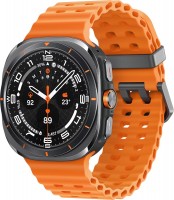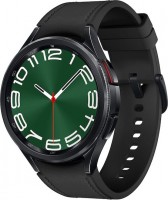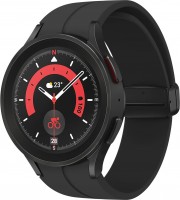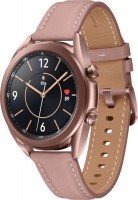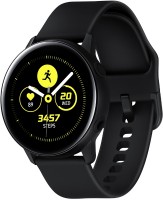Smartwatches & Trackers Samsung series 5th generation
prices on 2 modelsSamsung Galaxy Watch5
Samsung Galaxy Watch5 received a new sensor for measuring skin temperature and an improved BioActive sensor. Thanks to the redesigned curvature of the rear glass, the sensor surface area is larger and the watch has better contact with the wrist, providing more accurate measurements of heart rate and blood oxygen saturation. In addition to determining heart rate, they can measure stress levels, monitor ECG and blood pressure, track sleep quality, as well as analyze body composition and give personalized recommendations for water consumption.
 |
In terms of hardware, the watch is largely the same as the previous generation: it has the same Samsung Exynos W920 processor, and the memory capacity is the same 16/1.5 GB. The fifth Galaxy Watch runs the latest version of Wear OS, is equipped with a high-quality Super AMOLED screen, supports multiple training modes and rightfully claims to be a reliable sports instrument with an impressive number of built-in sensors, a high-precision GPS module, as well as a durable and reliable body that matches IP68 and MIL-STD-810H standards. Traditionally, Galaxy Watch 5 supports most modern wireless interfaces, can work in tandem with smartphones and can play the role of a smart digital wallet.
Interestingly, in the fifth generation, Samsung decided to change the usual release scheme and instead of the traditional Classic version, the company presented a 45 mm smart watch with the Pro prefix. Compared to the Galaxy Watch Classic, the Pro model gets rid of the rotating bezel around the watch face, its case is made of titanium rather than steel, and the design is somewhat reminiscent of Garmin tactical watches. At the same time, the classic Galaxy Watch 5 comes in two sizes (40 and 44 mm), the case is made of aluminium, and the main strap is silicone. Both smartwatch models also have LTE modifications with support for virtual e-SIM cards.

